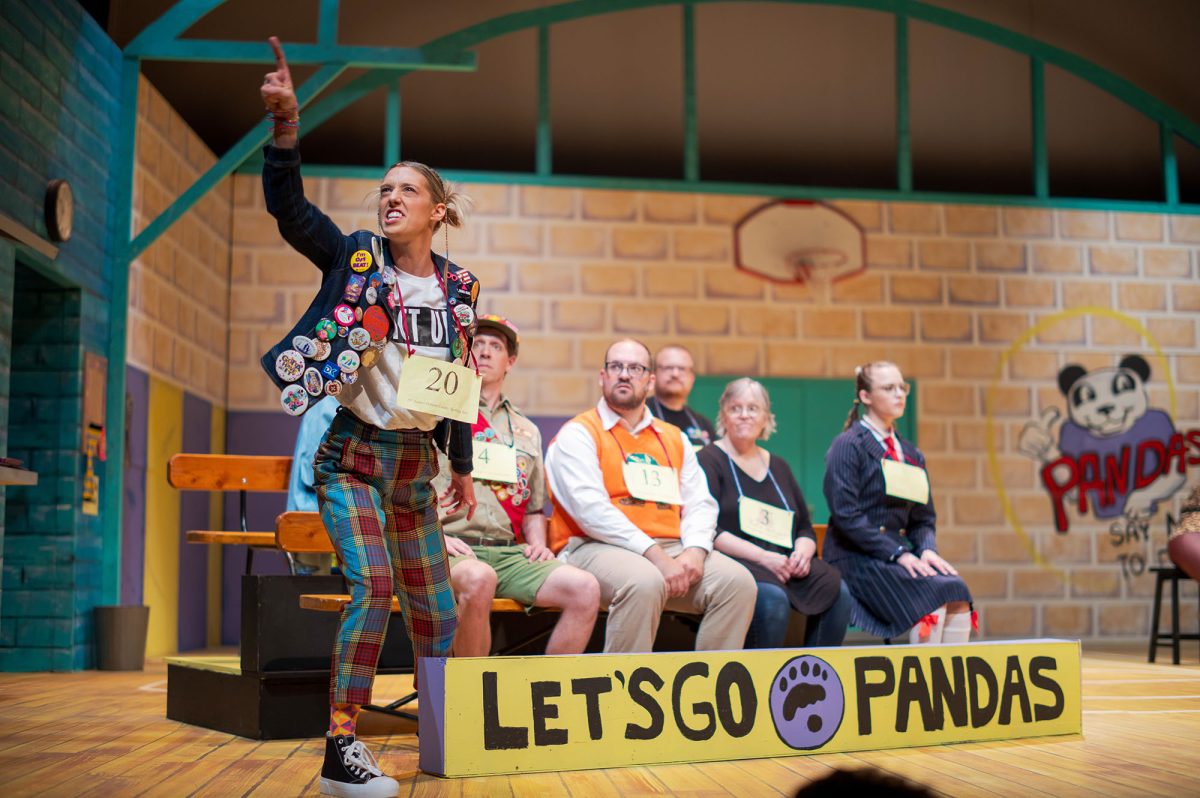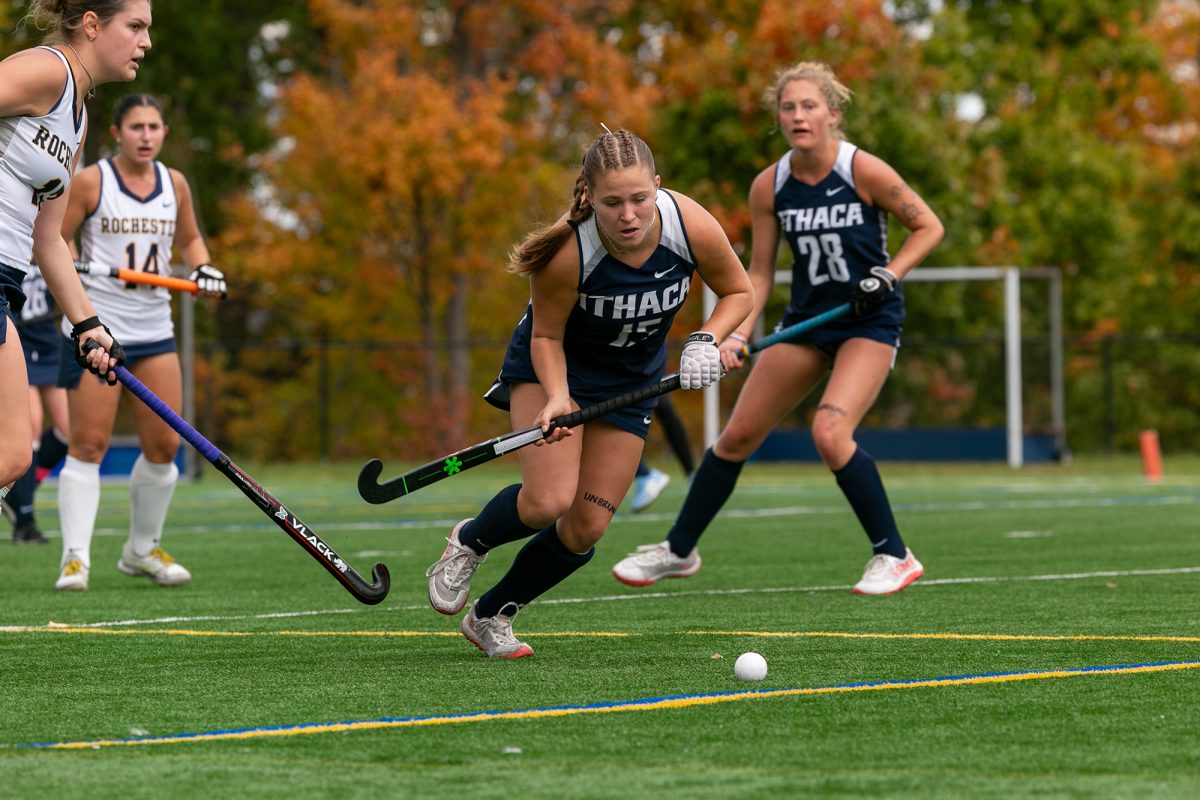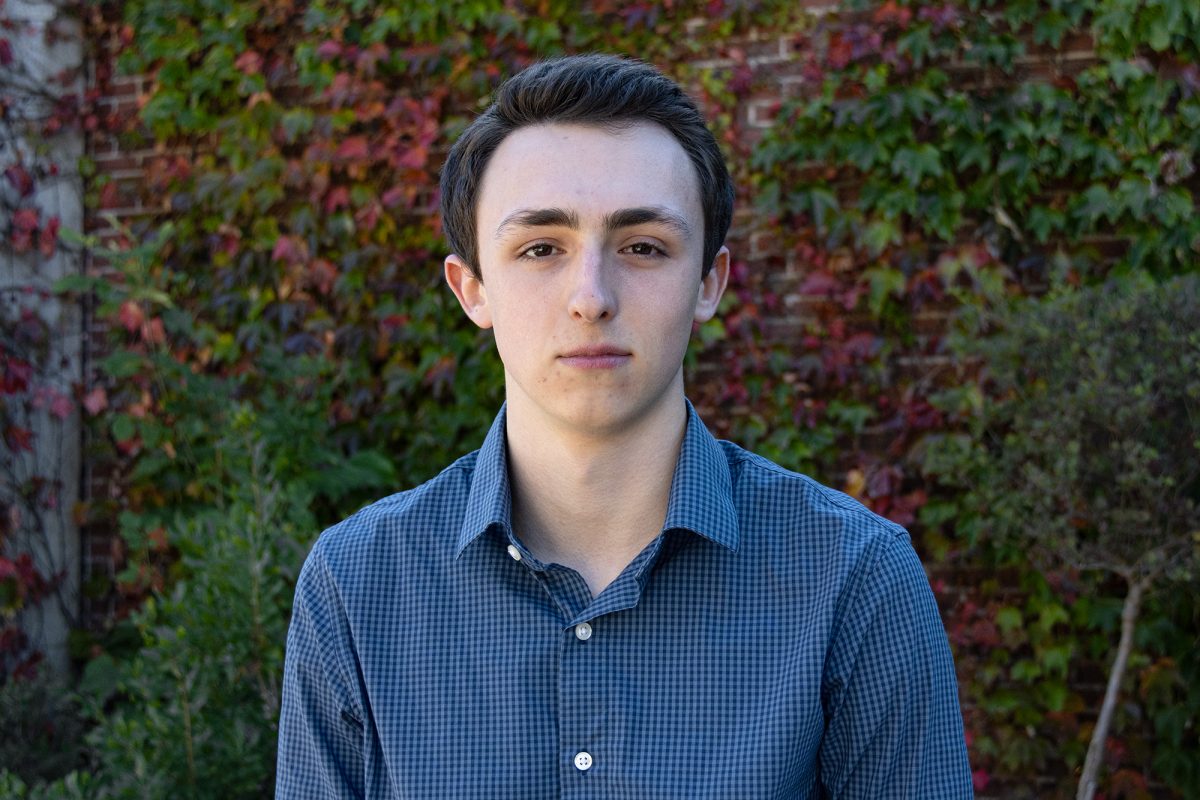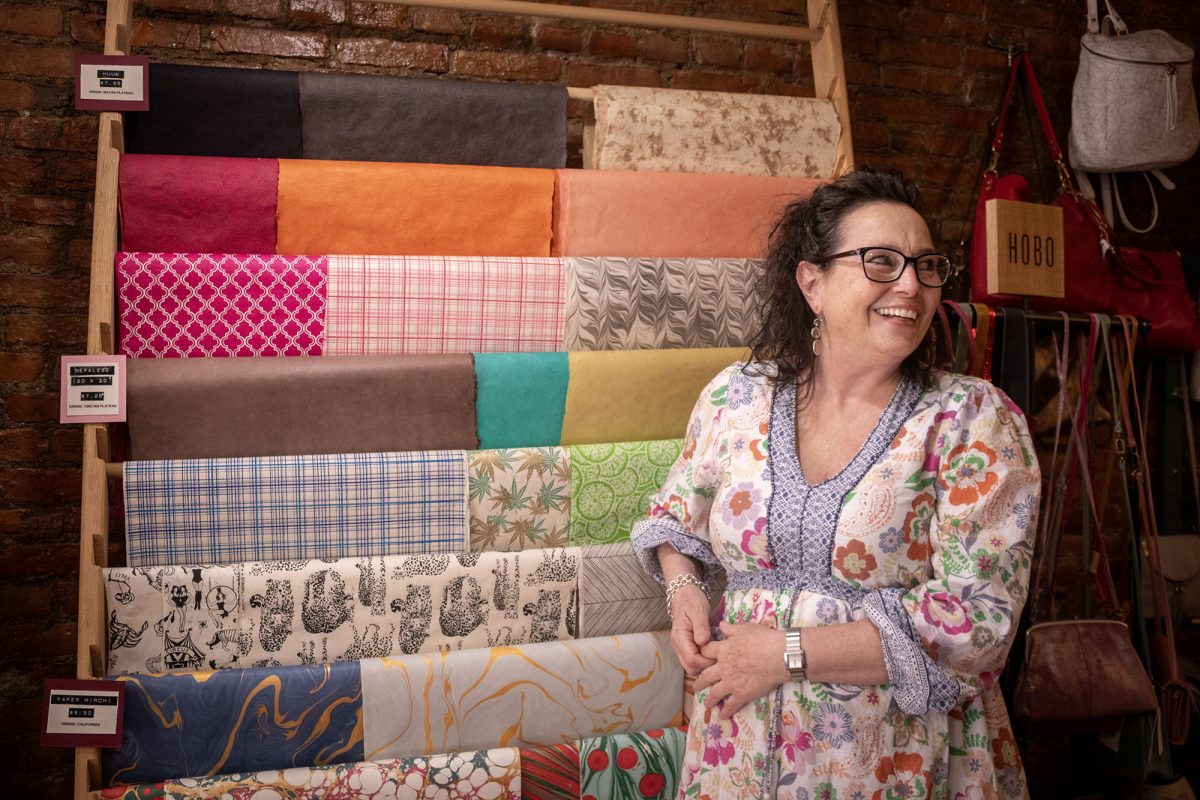The world on stage or screen does not just appear; it is meticulously crafted by production designers, the unsung heroes who shape the visual narrative. At Ithaca College, a new generation of these artists are honing their skills, pushing creative boundaries and learning the power of visual storytelling.
Production design encompasses everything the audience sees, from the grand sweep of a set to the smallest detail of a prop or the transformative power of makeup. It is a field that demands creativity, problem-solving and a keen understanding of narrative.
Senior MaCaleb Earle, a theatre production and design major specializing in costume design and props fabrication, said costume design’s transient nature differs from other art forms.
“It can be rewarding to be like, ‘I made this thing and I just gotta let it go,’ or if [I] made a mistake, I just have to let it go — this didn’t turn out right, but it’s gonna be gone in three weeks,” Earle said. “It also can be sad because you’ve spent a lot of time on this thing that only a limited amount of people get to see.”
Costume design’s fleeting nature in theater contrasts with film, where production design remains on screen for wider audiences. Yet, Callen Golden, an instructor in the Department of Media Arts, Sciences, and Studies, said production design is often overlooked in amateur work.
“Usually production design … isn’t something that students normally think about,” Golden said. “[They’re] usually thinking about writer, director, producer, sort of ‘lead’ roles. As a PD in the industry, I’m usually the second person that’s hired. … We collaborate with almost every single department.”
Golden said the art department, overseen by the production designer, is often the largest, and is involved from the initial script read through to the final wrap. Golden advises the IC Creatives club, formed in Fall 2024, for aspiring production designers and art department professionals, which she said positively impacts student films.
“A lot of films that wouldn’t have normally had a production designer … have gotten the opportunity to, which is really important,” Golden said.
First-year student Devon Masterson, a television, photography, and digital media major and member of IC Creatives, said she discovered the potential for a career in makeup artistry through the reality TV show “Face Off.” Entirely self-taught, Masterson said she appreciates the artistic potential of makeup beyond beauty.
“Whenever you think of art, makeup is … not one of the first [media] you think of,” Masterson said. “Usually, people think of drawing, painting or sculpture.”
Masterson said her work often delves into surrealism, like a class project inspired by insect dehumanization, where she sculpted prosthetics to merge human and insect features.
Golden said IC Creatives offers workshops from special effects makeup to crafting breakaway glass, offering hands-on experience and fostering collaboration. The club also helps students to pitch their film projects, with members able to take on art department roles on student sets.

Senior Dahye Eun, a TPD major specializing in scenic art, design and props, said the challenge for set design is bringing imaginative worlds to life onstage. Eun most recently designed the set for the college’s production of “Titanic: The Musical,” where she said she focused on the human stories amid the grandeur and tragedy, crafting a multi-level set with moving stairs.
“One of the biggest conversations in the room was, how do we create something that feels bigger than life itself in one room,” Eun said. “To me, it felt that this story was not so much about the ship or the disaster itself, but the people who filled the rooms.”
Eun said she drew inspiration from Brutalist architecture, finding its harsh angles effective in delineating the ship’s decks and highlighting the passengers’ stories. She said her artistic inspiration prioritized emotional impact over strict historical accuracy.
The practicalities of production design often require creative solutions. Senior TPD student Cady Loeb, who designs both costumes and sets, recently tackled props for the Kitchen Theatre Company’s production of “The Brobot Adventure,” involving a giant plant alien. Loeb said she took an innovative approach to creating the plant’s vines, purchasing a heat gun and pool noodles.
“People don’t always expect the design of a show to be so artistic,” Loeb said.
Golden shared some of the resourceful techniques she teaches students for achieving visual effects on a tight budget. She said she teaches her students to find DIY solutions, suggesting tea bags and coffee for aging paper, cinnamon for rust and hot glue with Mentos to mimic metal rivets.
“[It’s] a lot of … food,” she said. “It’s cheaper and easier to use, as opposed to the higher grade, more expensive materials.”
Junior Sam Smith, a cinema and photography major, said she discovered a passion for production design through directing her own films and desiring specific visuals. Smith said props can subtly yet powerfully convey narrative. For her film, “Honey,” she said she crafted diseased beehives to symbolize a toxic friendship, gluing dead bees to old beehives.
“These subtle details of props or set design in a film … reflect what the character is going through in the moment, or the theme of the film,” Smith said. “That’s how I’ve approached it.”
Loeb has also worked on student films and said film demands differ from those of stage design due to the camera’s proximity.
“Really, the devil is in the details for film, way more than in a stage production,” Loeb said. “Theater allows you to experiment with your artistic side and understand … what you’re able to accomplish without the magic of a camera.”
Along with the attention to design detail, Earle said costume design requires attention to navigating actors’ insecurities and collaborating closely with the creative team.
“We’re dealing with a lot of emotions,” Earle said. “We’re dealing with bodies, we’re dealing with people, we’re dealing with their insecurities … all these things that can make the job draining, but also really rewarding.”
Across both theater and film programs at the college, students are exploring resourceful uses of materials in set construction and makeup design techniques, approaching visual design with unconventional methods.
Eun said great production design goes beyond aesthetics and she stressed theater’s power to spark conversation.
“Good art is beautiful, but great art inspires,” Eun said. “Theater is about humans, by humans, for humans.”








